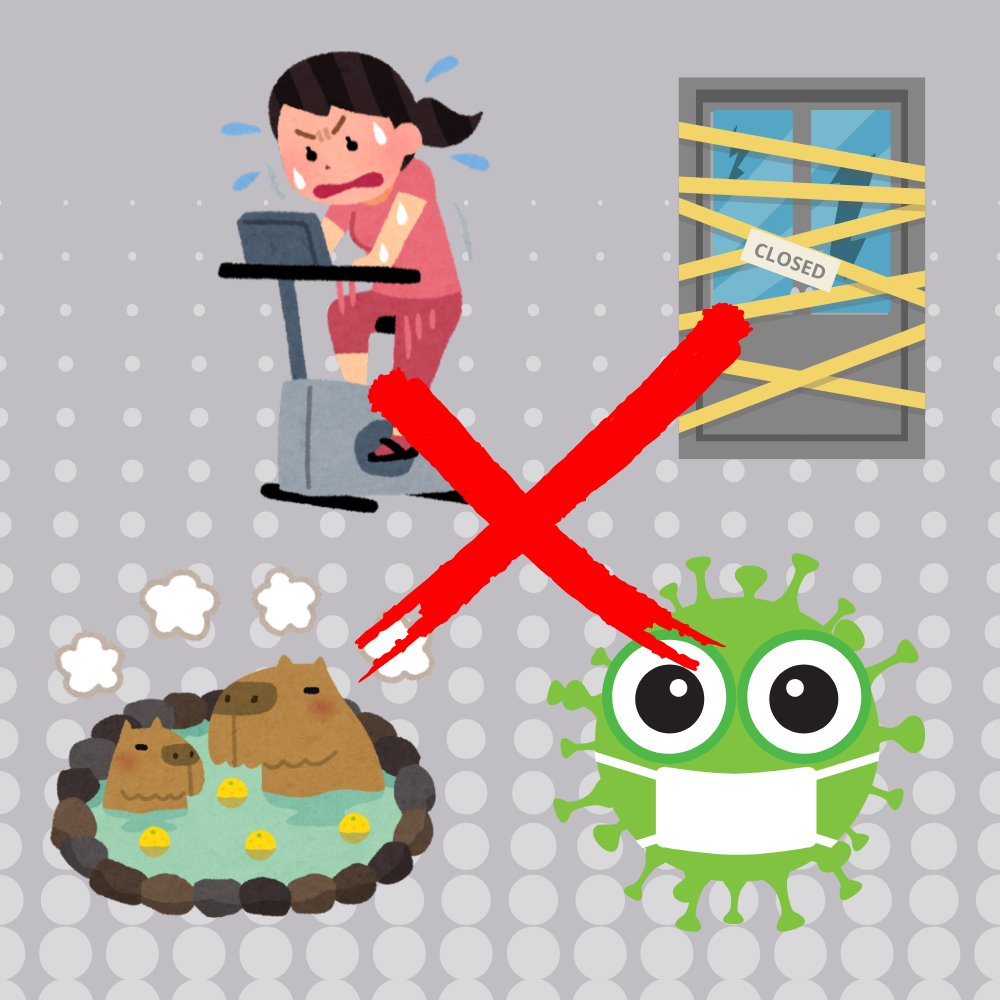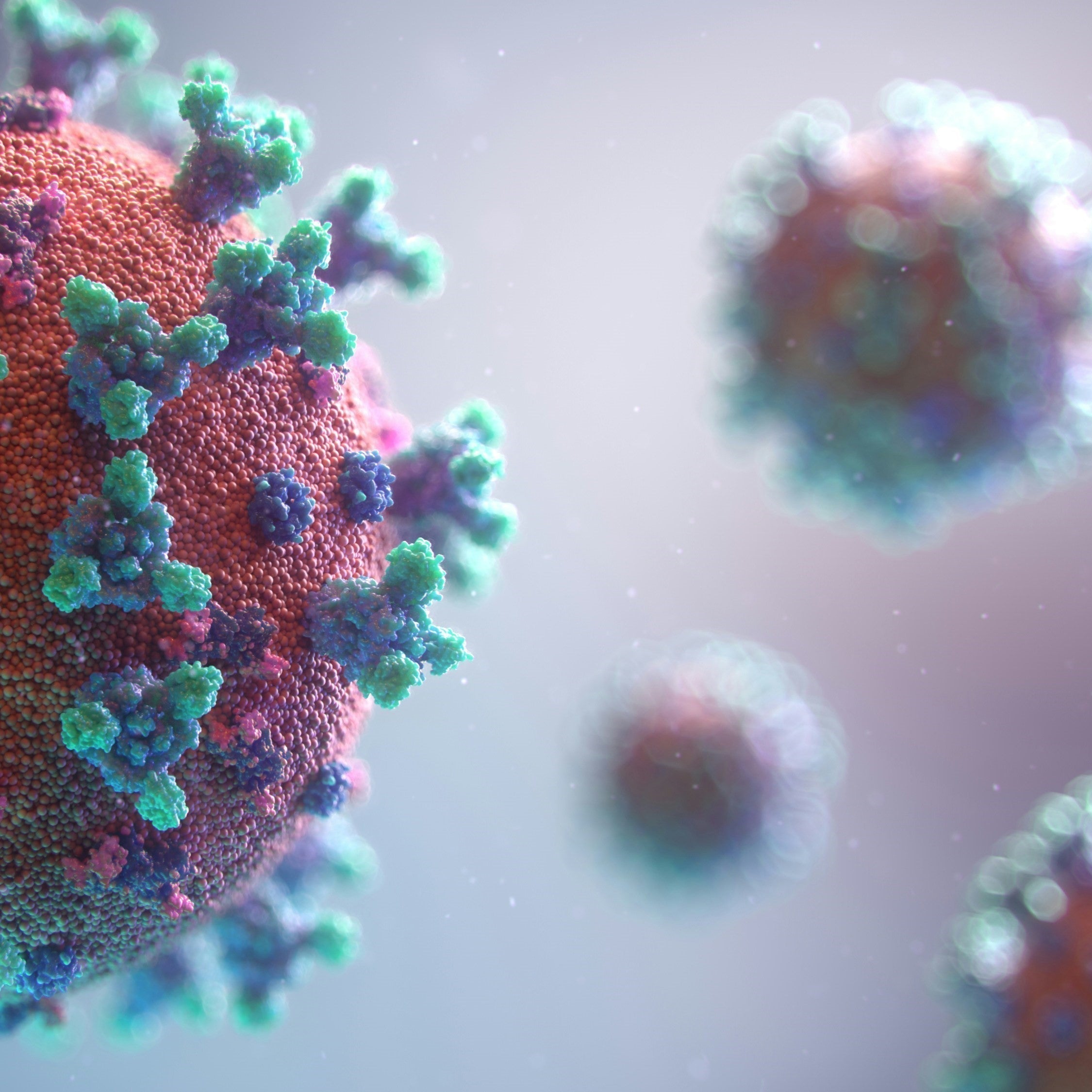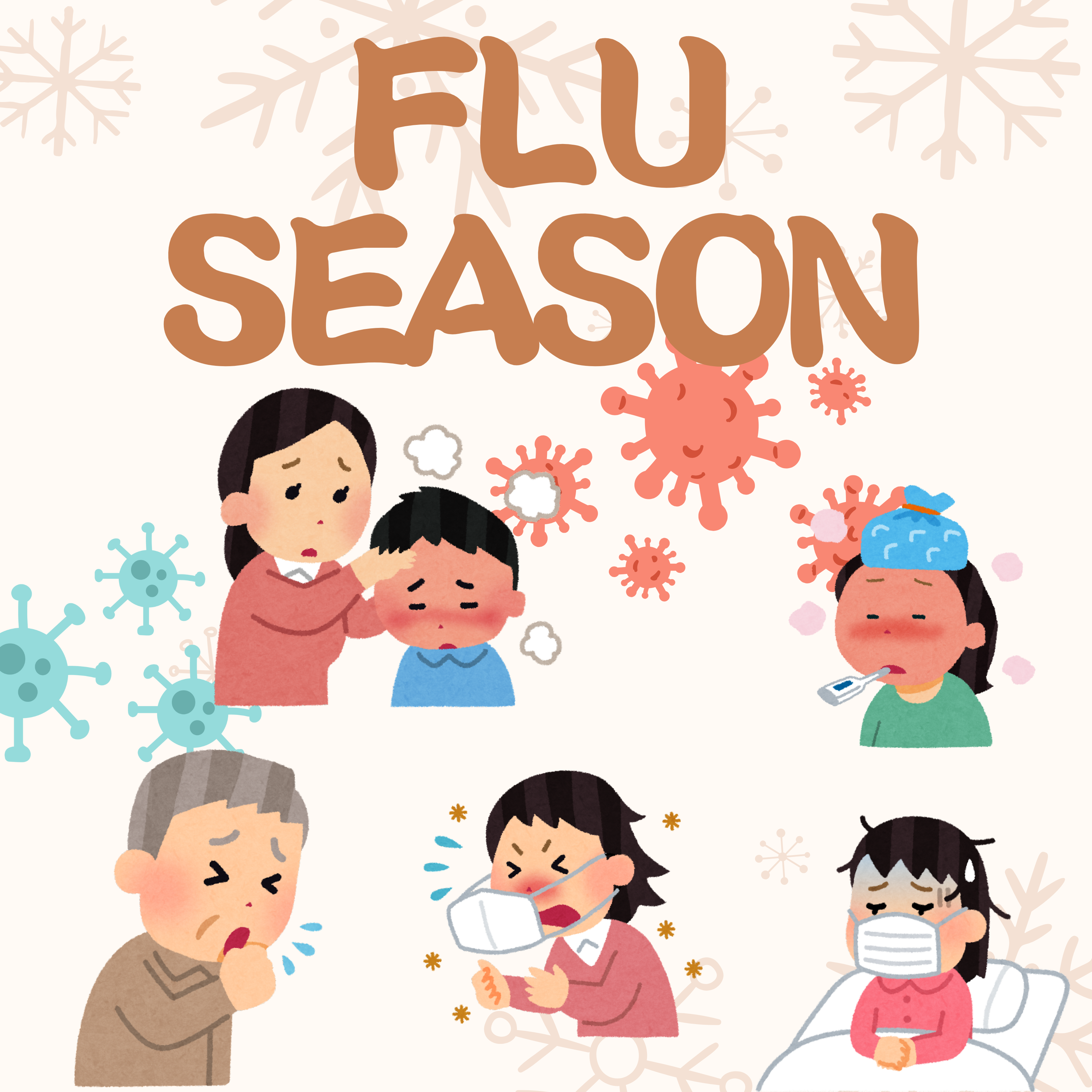
Four Things Not to Do During the Flu
The influenza is a common viral infection usually accompanied by symptoms such as fever, cough, sore throat, and muscle pain. Proper care and self-management are very important for patients. The flu is not scary, but many people get worse due to ignorance or neglect of health knowledge. HappynCare suggested you not to do the three things below during the flu to help you recover faster.
Go to a hot spring

Generally speaking, hot springs can dilate blood vessels, promote blood circulation, improve metabolism, and help detoxify the body. It is common for people to visit hot springs after the flu in order to promote recovery. Big mistake! In fact, hot springs will worsen your condition! Why?
1. Risk of virus transmission
The flu virus is mainly transmitted through respiratory droplets. While hot springs are often public places, and sharing baths with others increases the risk of infection.
2. Immune system stress
During the flu, the body's immune system is busy fighting against the virus. The high temperature may make the body feel tired, increasing the burden on the body, and slowing down the recovery.
3. Water quality
The water quality of public hot springs may not be as hygienic as private baths. There is risk that bacteria and other pathogens may further harm health.
4. Risk of dehydration
It's important to stay hydrated during the flu. Hot springs, especially in high temperatures, can easily lead to dehydration.
Energetic exercise

Some people may think that exercise strengthens the body's immunity, so do energetic exercise during the flu. This is also a common misconception! Light exercise, such as walking, can help improve circulation, but it should be done after getting well. Do not exercise vigorously during the flu period, and ensure adequate rest. What are the side effects of energetic exercise?
1. Immune system burden
The flu causes the body's immune system to fight the virus with all its might. Energetic exercise consumes a lot of energy, which can weaken the immune system, reduce resistance, and worsen the condition.
2. Fatigue and weakness
The flu is often accompanied by symptoms such as fatigue, weakness, and muscle pain. Energetic exercise can exacerbate these discomforts, leading to more exhaustion and impairing recovery.
3. Cardiovascular stress
The flu can affect heart function. Energetic exercise puts an extra strain on the cardiovascular system, which can lead to heart discomfort.
4. Extend recovery time
The body needs to rest and recover when it is sick, and energetic exercise can delay the recovery process, causing symptoms to last longer.
5. Risk of Injury
During the flu, the body's coordination and reaction speed may be affected, and energetic exercise can easily lead to injuries or accidents.
6. Aggravate the burden on the respiratory system
The flu is usually accompanied by a cough or difficulty breathing, and energetic exercise can make these symptoms worse and interfere with breathing.
Stay in enclosed space

People with influenza should avoid going to public places as much as possible. But some people overacted and stay in enclosed rooms all day. It is important to maintain good ventilation and proper social distancing to reduce the risk of infection and promote faster recovery. What are the dangers of staying in enclosed space?
1. Virus transmission
Influenza viruses are mainly transmitted through respiratory droplets. In enclosed spaces, viruses tend to accumulate in the air, increasing the risk of infection.
2. Poor ventilation
Enclosed spaces tend to be poorly ventilated, so pathogens cannot spread effectively, increasing the chances of infection.
3. Psychological stress
Staying in an enclosed space for long periods can cause psychological stress, which has negative impacts on the body's immune system.
4. Lack of fresh air
Enclosed spaces often lack fresh air, which is bad for the respiratory system and can worsen flu symptoms and affect recovery.
Wearing Facial Masks of Low Protection

Professionals generally recommend patients to wear masks. But are all masks effective? Certainly not! There are many types of masks, and their protection efficacy vary greatly. In simple terms, masks can be divided into non-medical and medical masks. Non-medical masks, such as cloth masks or dust masks, are of low protection levels and are only suitable for daily use, since they do not provide virus protection. Medical masks can be further divided into regular surgical masks and professional protective respirators (N95/N99/FFP2). Regular surgical masks can block most droplets and may be used by mild or low-infectious patients, but safest and most reliable choice is the professional protective respirator used by frontline medical professionals. What are the dangers of wearing masks of low protection?
1. Insufficient Protection
Masks of low protection cannot effectively filter droplets, which may increase the transmission risk when the patient is coughing or sneezing. If there are elderly people, children or chronic patients at home, it is highly risky to infect them with influenza.
2. False Sense of Security
Patients wearing masks of low protection may have a false sense of security. They believe that they are adequately protected, thereby neglecting other necessary measures, such as maintaining social distance or washing hands frequently, which ultimately increases risk.
3. Risk of Worsening Condition
Masks of low protection cannot effectively block external pathogens. The immune system of flu patients is already busy fighting against the flu virus. If external pathogens take advantage of this weakness, it may worsen the body condition.
Many people become aware of the importance of health only after they get sick, but often neglect prevention. During flu season, vaccination, good hygiene, and wearing a mask are effective ways to prevent diseases. If you don't pay attention to these ways, you may infect yourself and even pass the virus to others. NASK nanofiber respirators are trusted by medical staff for the ability to effectively kill 99% of pathogens. Fight against the flu with NASK. HappynCare also provides respirators suitable for kids. Please order now to protect yourself and your family!







Leave a comment
This site is protected by hCaptcha and the hCaptcha Privacy Policy and Terms of Service apply.